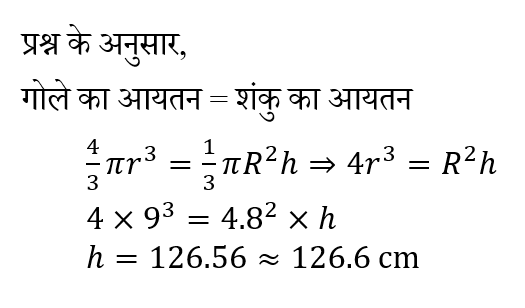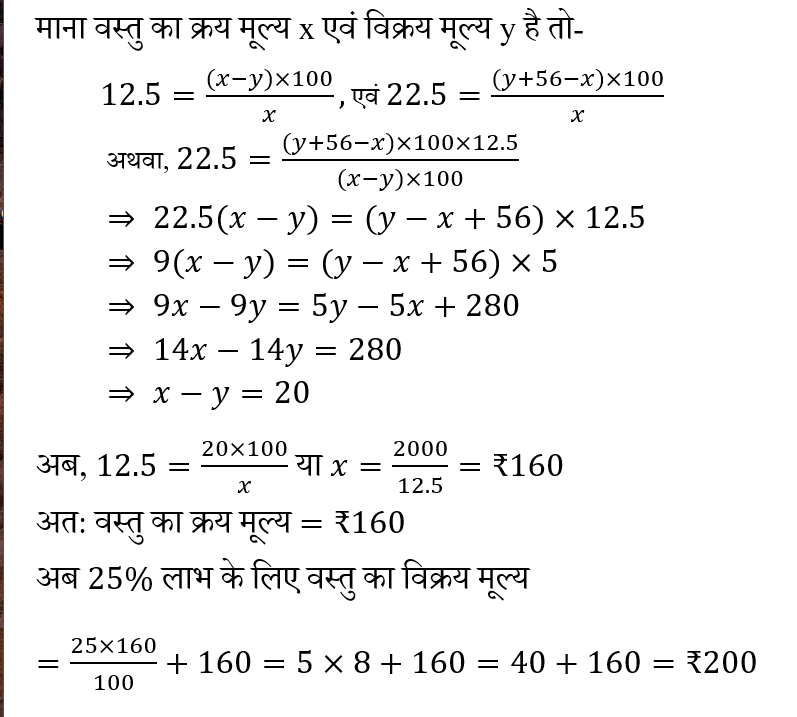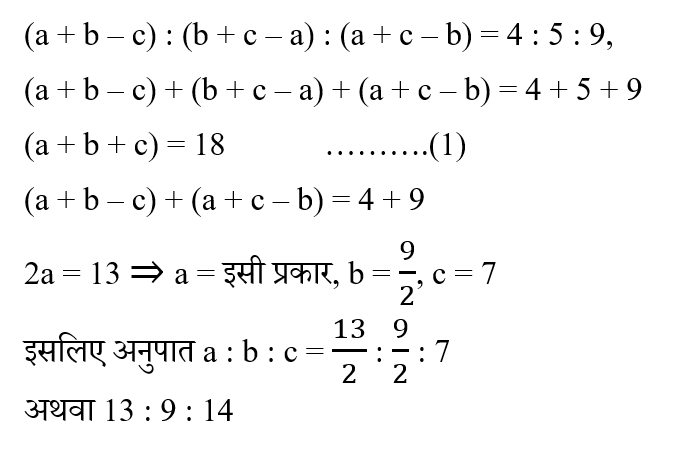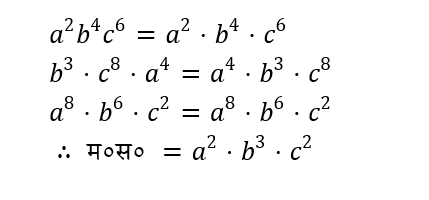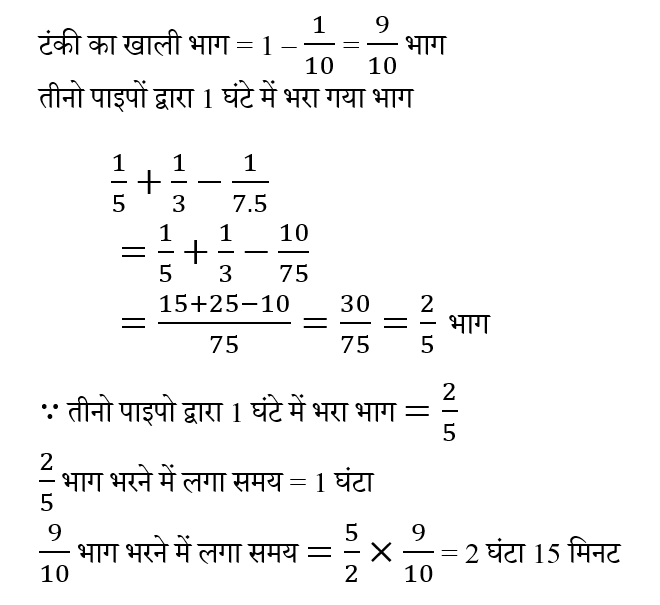Question 1:
The cost of 3 shirts and 2 trousers is ₹950, while the cost of 2 shirts and 3 trousers is ₹1,050. What will be the price of 4 trousers and 5 shirts?
3 कमीज़ों और 2 पतलूनों की कीमत ₹950 है, जबकि 2 कमीज़ों और 3 पतलूनों की कीमत ₹1,050 है। 4 पतलूनों और 5 कमीज़ों की कीमत क्या होगी ?
Question 2:
If the length and breadth of a rectangle are doubled, what will be its perimeter?
यदि एक आयत की लंबाई और चौड़ाई को दोगुना कर दिया जाए, तो उसका परिमाप कितना हो जाएगा?
Question 3:
A metallic sphere of radius 9 cm is melted and cast into a cone of base radius 4.8 cm. Find the height of that cone (in cm, corrected to one decimal place).
9cm त्रिज्या वाले धातु के एक गोले को पिघलाया जाता है और 4.8 cm त्रिज्या वाले आधार के शंकु में ढाला जाता है। उस शंकु की ऊंचाई (cm में, दस्मलव के एक स्थान तक शुद्ध) ज्ञात्त कीजिये ।
Question 4:
At a certain rate of simple interest Rs 800 becomes Rs 956 in 3 years. If this principal becomes Rs 1052 in the same period, then what is the percentage of increase in the rate of interest?
साधारण ब्याज की एक निश्चित दर पर 800 रुपये 3 वर्ष में 956 रुपये हो जाता है। यदि इसी अवधि में यह मूलधन 1052 रुपये हो जाता है तो ब्याज की दर में वृद्धि का प्रतिशत क्या है?
Question 5:
Pawan sold an article at a loss of 12.5%. If he had sold the item for ₹ 56 more, he would have earned 22.5% profit. What should be the selling price of that item to get 25% profit?
पवन ने एक वस्तु 12.5% की हानि पर बेच दी। यदि उसने वह वस्तु ₹ 56 अधिक में बेची होती, तो उसे 22.5% लाभ प्राप्त हुआ होता। 25% लाभ प्राप्त करने के लिए उस वस्तु का विक्रय मूल्य कितना होना चाहिए?
Question 6:
If (a + b – c) : (b + c – a) : (a + c – b) = 4 : 5 : 9, then what will be the value of a : b : c?
यदि (a + b – c) : (b + c – a) : (a + c – b) = 4 : 5 : 9 है, तो a : b : c का मान क्या होगा?
Question 7: 
Question 8:
In a journey of three unequal parts, a car covers the first part of 200 km in 4 hours, while the second part covers 162 km at the speed of 15m/s. It covered the remaining distance of the last part in 4 hours such that the average speed of the car for the entire journey became 50km/h. What was the speed of the car in the third part of the journey?
तीन असमान भागों की यात्रा में, एक कार पहले भाग की 200 km की दूरी 4 घंटे में तय करती है, जबकि दूसरे भाग की 162 km की दूरी, 15m/s की चाल से तय करती है। इसने अंतिम भाग की शेष दूरी को 4 घंटे में इस प्रकार तय करती है कि पूरी यात्रा के लिए कार की औसत चाल 50km/h हो गई। यात्रा के तीसरे भाग में कार की चाल क्या थी ?
Question 9:
The party buys a bed for ₹ 16,725 after a discount of 22%. Later he finds that the same store was selling the bed online for ₹15,685 after a 15% discount. What is the difference between the marked price of a bed purchased from a store and the marked price of a bed purchased online? (Rounded off to the nearest ₹)
पार्टी एक बेड 22% की छूट के बाद ₹16,725 में खरीदता है। बाद में वह यह पाता है कि यही स्टोर उस बेड को ऑनलाइन 15% छूट के बाद ₹15,685 में बेच रहा था। स्टोर से खरीदे गए बेड के अंकित मूल्य और ऑनलाइन बेड के अंकित मूल्य में क्या अन्तर है? (निकटतम ₹ में पूर्णांकित)
Question 10:
Two pipes can fill a tank in 5 hours and 3 hours respectively, while the third pipe can empty the tank in 7.5 hours. When the tank was 1/10th full, all three pipes were opened simultaneously, then how much time would it take to fill the tank completely?
दो पाइप एक टंकी को क्रमशः 5 घंटे और 3 घंटे में भर सकते हैं, जबकि तीसरा पाइप टंकी को 7.5 घंटे में खाली कर सकता है। जब टंकी 1/10 भाग भरी हुई थी तब तीनों पाइप साथ-साथ खोले गए, तब टंकी को पूरा भरने में कितना समय लगेगा?

